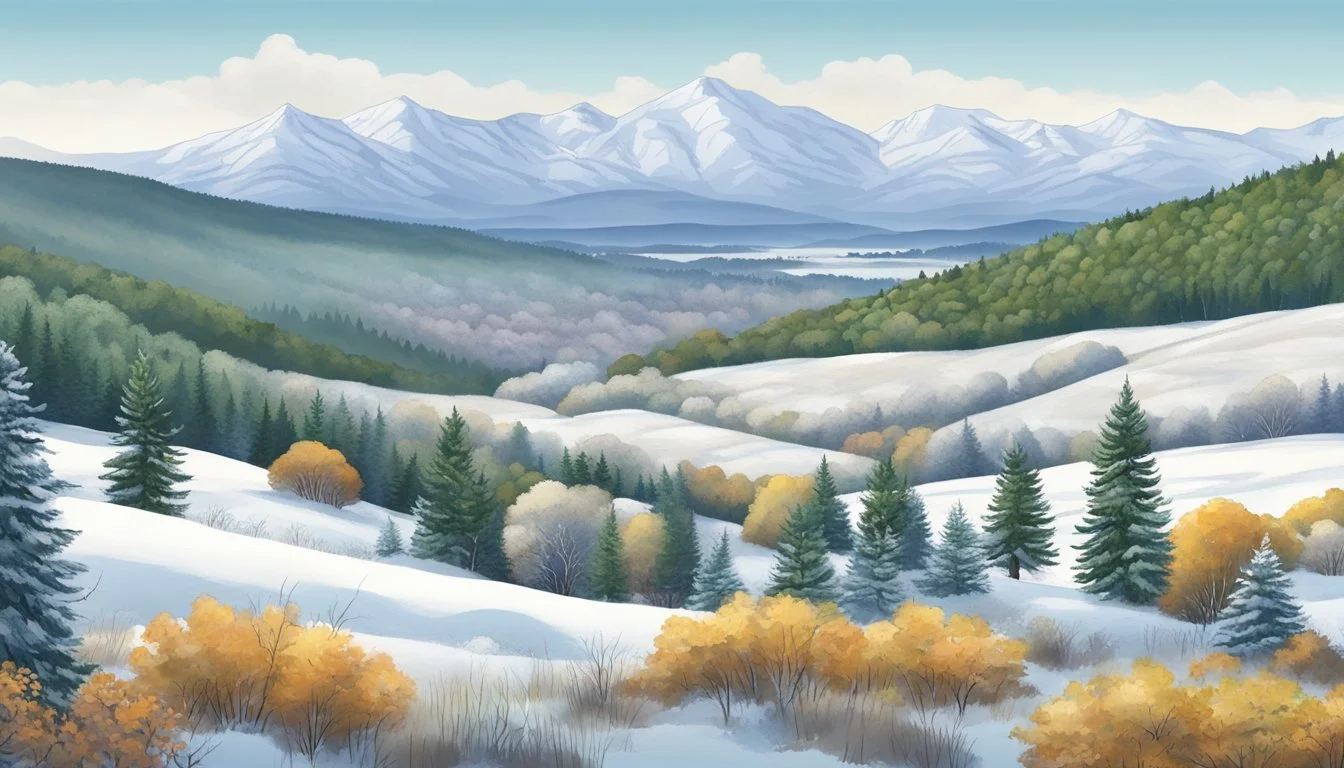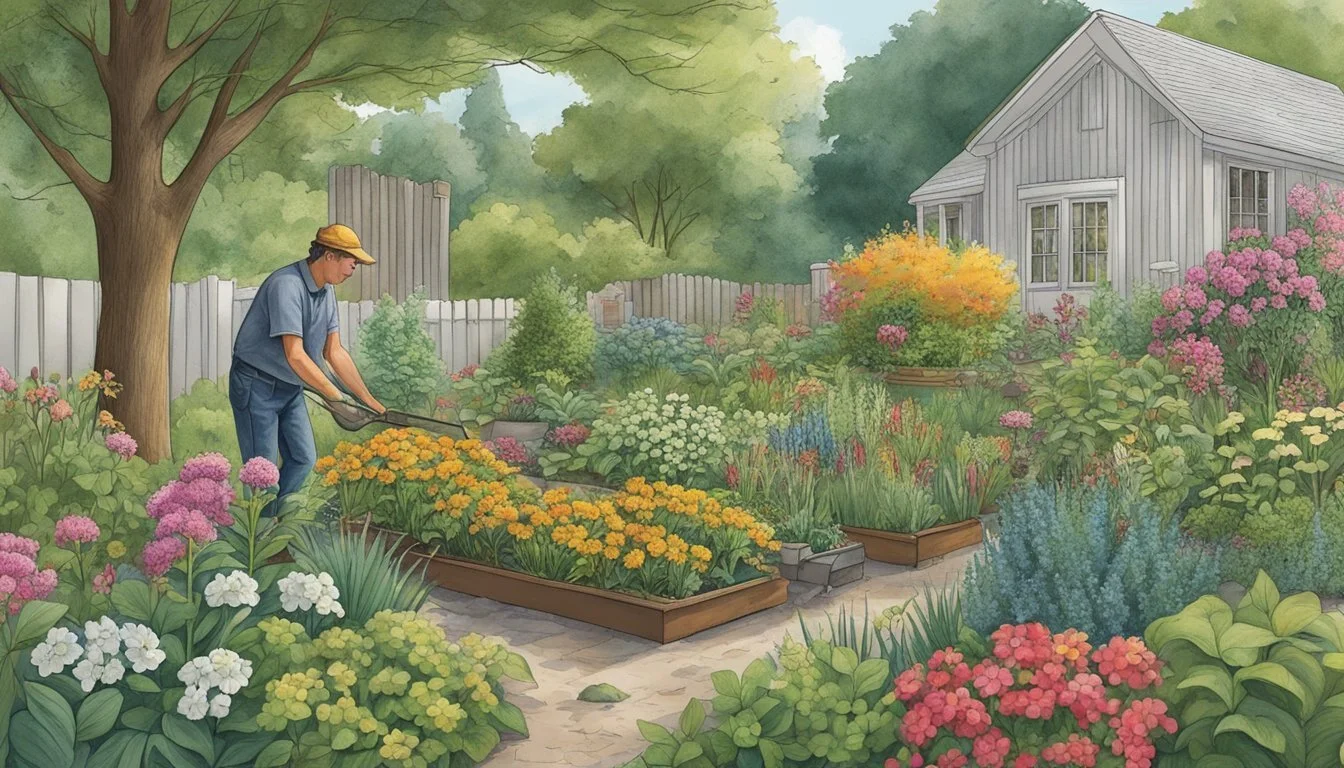USDA Hardiness Zones in Vermont
A Guide to Successful Gardening
Gardeners and growers in Vermont rely on the USDA Plant Hardiness Zone Map to make informed decisions about planting and cultivation. This map, created by the United States Department of Agriculture, delineates areas based on their average annual extreme minimum winter temperatures. By referring to the 2023 USDA Plant Hardiness Zone Map, Vermont residents can identify which perennials are most likely to thrive in their specific location.
Vermont's varied topography leads to a range of climates within the state, which is reflected in its hardiness zones. From the frigid temperatures of Zone 3b to the relatively milder Zone 6a, the state encompasses a diverse selection of zones suitable for different perennial plants. The Vermont Interactive USDA Plant Hardiness Zone Map is a particularly useful tool for residents to pinpoint their exact hardiness zone through an interactive experience.
Understanding one's specific hardiness zone facilitates successful gardening by aligning plant choices with the local climate conditions. The most recent USDA unveiling of an updated Plant Hardiness Zone Map offers an even more precise guide for Vermont gardeners, considering factors like microclimates and elevation that may affect plant survival and growth. It is the standard reference for researchers and gardeners aiming to optimize plant hardiness and ensure sustainable gardening practices within the state.
Understanding USDA Hardiness Zones
The United States Department of Agriculture (USDA) Hardiness Zones provide critical information to gardeners and growers regarding the most suitable plants for their region. These zones are determined by the average annual extreme minimum winter temperature.
Definition of Hardiness Zones
Hardiness zones, delineated by the USDA, classify regions based on their climatic conditions, specifically the coldest temperatures they can expect each year. This categorization helps in understanding which plants are most likely to thrive in a particular location. They range from zone 1, where it is the coldest, to zone 13, the warmest.
The USDA Plant Hardiness Zone Map Overview
The USDA Plant Hardiness Zone Map is an indispensable tool for anyone interested in horticulture and agriculture. It divides North America into 13 primary zones, each one representing a 10-degree Fahrenheit band of average annual extreme minimum temperatures. Additionally, these zones are further sub-divided into "a" and "b" segments to provide a more precise guide, reflecting 5-degree Fahrenheit differences within each zone.
For example, Vermont spans several hardiness zones, from USDA Zone 3b (where temperatures can drop to -35 to -30°F) to USDA Zone 5b (with lows of -15 to -10°F), showcasing the state's climatic variability.
Vermont's Climatic Conditions
Vermont's climatic conditions are characterized by its cold winters with considerable snowfall and the existence of varied microclimates due to its topography.
Winter Temperature and Precipitation
In Vermont, winter temperatures can frequently drop to below freezing, with the coldest zones experiencing lows of -30°F to -25°F. During the coldest months, snow is a significant part of Vermont's climate, with snowfall varying widely across different regions of the state.
Microclimates within Vermont
Vermont hosts a range of microclimates, greatly influenced by elevation. Higher elevations can cause temperature and precipitation to differ from nearby low-lying areas. This includes variations in wind patterns and snowfall, which can affect the local gardening and farming practices.
Gardening in Vermont
In Vermont, the key to successful gardening lies in understanding the local climate and selecting plants that align with the region's USDA Hardiness Zones, which range from 3b to 6a.
Selecting Plants for Vermont Gardens
Gardeners in Vermont should focus on plants suited to USDA Zones 3b through 6a. It's crucial to choose perennial plants, trees, shrubs, and perennial flowers that can withstand the state's colder temperatures. Nurseries are an excellent resource for finding native plants and hardy varieties that thrive in Vermont's specific conditions. For example, certain evergreens and deciduous trees fare well, alongside berry bushes and a range of perennial flowers that can handle the chilly winters.
Gardening Challenges in Vermont
Vermont gardens face significant challenges due to the state's short growing season and cold temperatures which can dip to -30°F. Gardeners must prepare for frost dates and ensure adequate protection for their plants. Embracing these challenges means utilizing protective measures like mulch for insulation and choosing robust plant varieties. Garden planning becomes a pivotal activity to maximize the shorter seasons and to ensure that the garden remains vibrant and productive year-round.
How to Use the Hardiness Zone Map
Understanding the USDA Plant Hardiness Zone Map is essential for successful gardening and farming in Vermont. It guides gardeners in selecting plants likely to thrive in their specific location based on climate conditions.
Navigating the USDA Plant Map
To properly navigate the USDA Plant Map, individuals should start by locating Vermont on the interactive map. One can input a specific zip code or browse the state by region to pinpoint their local area. The map will display the relevant zone, which indicates the lowest temperatures that plants in the area can be expected to withstand.
Interpreting Zone Information
Each zone on the USDA Plant Hardiness Zone Map is defined by a 10-degree Fahrenheit range, further subdivided into 'a' and 'b' to indicate a 5-degree Fahrenheit range within that zone. For example, Zone 4b represents temperatures from -25°F to -20°F. Knowing the precise zone allows gardeners to determine the plants most likely to thrive in their area.
Strategies for Successful Planting
Successful planting in Vermont requires understanding the USDA Hardiness Zones and the unique environmental factors that can influence plant survival and growth. Precise planning and responsiveness to microclimates are pivotal for a thriving garden or landscape.
Planning for Survivability and Growth
When selecting plants for Vermont's climate, gardeners should first consult the Vermont Interactive USDA Plant Hardiness Zone Map to determine the zone-appropriate varieties. Plants should be chosen based on their adaptability to survive winter temperatures ranging from -30°F to -5°F, which corresponds to zones 4a through 6a.
Considerations for Plant Selection:
Hardiness: Ensure plant species can withstand the lowest winter temperatures in your zone.
Duration of Cold: Some plants require longer periods of cold to thrive; select species accordingly.
Summer Heat: Although winter hardiness is critical, choose plants that can also tolerate Vermont's summer conditions.
Care Requirements:
Watering: Frequency and amount should align with the plant’s needs, factoring in Vermont's rainfall patterns.
Soil: Amend the soil to match the preferred pH and nutrition levels of your chosen plants.
By aligning the plants’ characteristics with Vermont’s environmental conditions, they can not only survive but also grow vigorously.
Adjusting for Microclimates
Microclimates within your garden can significantly impact the survivability of plants beyond what is indicated by the hardiness zone map. These small-scale environmental variations can be created by buildings, water bodies, or specific land features.
Steps to Account for Microclimates:
Observe: Identify warmer spots that offer protection from wind or cold pockets near dips in the land.
Record: Keep a log of temperature variations in different parts of the garden.
Respond: Select and place plants where their chances of survival increase, taking advantage of these microclimates.
By taking specific microclimates into account, gardeners can successfully grow a broader range of plants that might not typically be recommended for their primary hardiness zone. In this detailed approach, one ensures every plant's care and environmental factors are tailored, optimizing their survival and growth prospects.
Additional Considerations for Zone-Based Planting
When planning a garden in Vermont, understanding USDA Hardiness Zones is just the beginning. Advanced preparation requires taking local weather data and wildlife habits into account to ensure plant hardiness and longevity.
Weather Data and Plant Selection
Gardeners should consider local weather patterns beyond the average annual temperature ranges that the USDA Plant Hardiness Zones provide. For example, the timing and frequency of frost in spring can be critical to the survival of newly planted perennials. Careful selection of plants based on both their zone rating and their ability to withstand sudden temperature changes is essential. Light exposure, particularly the duration of daylight that can vary significantly in Vermont, also affects plant growth and health.
Influence of Wildlife on Plant Hardiness
Wildlife in Vermont can have a substantial impact on the hardiness of plants. Insects and pests are more than a nuisance; they can be a threat to the survival of garden plants. Deer and other large animals can damage or destroy perennials if not deterred. Selecting plants that are resistant to these threats or implementing protective measures such as fencing or repellents plays a vital role in the success of zone-based planting in this region.
Map Resources and Updates
Navigating the latest updates and resources for the USDA Hardiness Zone Map is critical for gardeners and growers in Vermont. These tools are essential for understanding which plants are suited to thrive in specific regions of the state.
Accessing the Latest Zone Maps
The USDA Plant Hardiness Zone Map is a vital resource for anyone looking to plant perennials in Vermont. As of 2023, the latest version of this map reflects the most current data on the average annual extreme minimum winter temperatures. Gardeners can easily access this map through the USDA's official website, which offers an interactive format developed by Oregon State University. This latest version presents updates that are crucial for making informed planting decisions.
Understanding Map Downloads and Details
For a more detailed analysis of planting zones, map downloads are available. These downloads provide intricate layers of information that are especially useful for educational purposes and for those involved in agricultural planning. They can be found on the same USDA website, containing zone specifications that range from detailed to broad scales. It's important for users to have a solid internet connection, as the files may be extensive due to the level of detail included. These map downloads include detailed legends and keys that help in interpreting the zones accurately, thereby assisting in the selection of plants most likely to prosper in varying Vermont climates.
National and International Zone Mapping
In the context of plant hardiness, USDA Zones provide a standard way to denote where plants can thrive across various regions. The zones, ranging from 1 to 13, indicate the average annual extreme minimum temperatures a plant must be able to withstand to survive and grow.
Comparison with Other States
Vermont's climate is generally colder than many other states, with USDA Hardiness Zones spanning from 3b to 5b, indicating minimum temperatures from -35°F to -10°F. For comparison, states like Oregon have zones ranging up to 9b, reflecting their milder climates. It's important to note the zones' significance, for instance, Oregon State University often references these zones in their agricultural and horticultural research.
Hardiness Zones Beyond the United States
Beyond the continental US, the USDA Hardiness Zones are also used in regions such as Puerto Rico and territories like Alaska and Hawaii. Alaska's frigid environment includes zones as low as 1, representing the harshest conditions for plant survival. Puerto Rico, on the other hand, experiences a tropical climate with zones around 13, indicating a much warmer environment. These zone designations help gardeners and agriculturists understand and anticipate plant behavior in different climates around the globe.
Frequently Asked Questions
In this section, readers will find answers to common inquiries regarding the USDA Hardiness Zones specific to Vermont, along with resources for local gardening and planting guidance.
What are the different USDA hardiness zones found within Vermont?
Vermont features a range of USDA hardiness zones from 3b to 5b, with the latest USDA map update indicating zones extending from 4a to 6a.
How can I determine the USDA planting zone for my specific area in Vermont?
To find the exact USDA planting zone for a specific location in Vermont, gardeners can enter their zip code on the USDA's interactive map or look directly on state-specific interactive maps.
Which plants are suitable for cultivation in Vermont's hardiness zones?
Plant selection should be compatible with Vermont's cold extremes, which dip to -30 degrees F in some areas. A variety of perennials, trees, and shrubs that tolerate these conditions are recommended.
Where can I find an interactive map that shows Vermont's hardiness zones?
Interactive maps that can be zoomed into for detailed information on Vermont's hardiness zones are available online, assisting gardeners in choosing suitable plants.
How do hardiness zones in Vermont compare with neighboring states like Maine?
Vermont's hardiness zones are similar to those in Maine, though Vermont can have areas with slightly milder winters, particularly in southern regions that reach up to zone 6a.
Are there any region-specific planting schedules available for each of Vermont's hardiness zones?
Gardeners can consult local extension services or gardening groups, where region-specific planting schedules that account for local climate variations within Vermont's hardiness zones are typically available.









